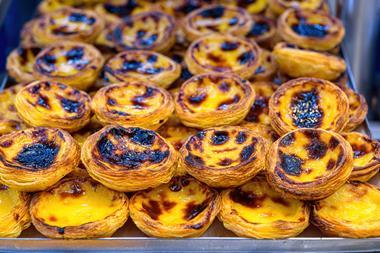Temperatures are set to soar in the UK this week, potentially reaching record-breaking highs. While this is great for sunbathers, it can wreak havoc for bakers.
Tomorrow (25 July) is tipped to be the hottest July day on record, with a peak of 38˚C in the south east – the current record if 36.7 ˚C set at Heathrow in 2015.
With such extreme weather on the horizon, British Baker has sought advice from the nation’s bakers on how they are preventing their products from spoiling in the heat.
Water and dough temperature in bread-making
Temperature can have a huge impact on bread-making, with dough temperature affecting gas production, gas retention and dough rheology.
Hot weather will raise the temperature of the mains water supply, sometimes to the point where it is too high for bread-making, explains Stan Cauvain of bakery consultancy BakeTran.
“It is necessary for a large number of bakeries to have a supply of chilled water,” he says. “Even this supply can be inadequate and flaked ice is often added to control the final dough temperature.
“There are occasions, even in this country, when flour temperatures are so high that chilled water and ice together may be inadequate because the supply cannot cope with the production. In this context, the warmth of the bakery in the summer months adds to the problem.”
Cauvain says one way of mitigating the issue is avoiding flour being warmed as it stands waiting to be used, which is typically achieved by using external flour silos. Flour can be chilled, but this is not easy and is an expensive operation.
Don’t be afraid to change your product mix
While cream cakes may be a customer favourite in some parts of the country, few will be enticed if the cream isn’t up to its usual standard. As such, bakers shouldn’t be afraid to mix things up.
“We are reducing cream cake lines and confectionery items, but increasing bread rolls, pork pies, savouries and, of course, drinks,” explains Mike Holling, head of retail at Birds Bakery.
“All our shops are air-conditioned, so that helps greatly to maintain product integrity.”
Changes to production may also need to be made. Zulekha Afzal, events manager for Bath Cake Company, says the firm is covering and decorating cakes earlier in the day when it is slightly cooler.
“We are also keeping doors and windows open at all times,” Afzal says. “We are using fans to keep the products cool and reducing the hours the ovens are on.”
Top tips: from fresh cream to fermented dough
Ann-Marie Dunne, former bakery lecturer at the Dublin Institute of Technology, offers advice to bakers during warm weather production:
- In fresh creams, add some stabiliser such as a modified starch/gels to help prevent weeping, and use refrigerated whipping units if large-scale production. Keep bowls for whipping cream and whisks in the fridge when not in use, so they are cold prior to whipping.
- Consider changing from fresh cream to a crème patissière during warm weather, which is more stable and commonly used as pastry/gateau fillings in countries where long, hot summers are the norm.
- Place sugar paste in packets in the fridge one hour prior to opening, which will help pinning out in warm weather easier, and will prevent unwanted stretching and cracking while covering cakes.
- Consider insulated boxes for the transport of fresh cream cakes.
- Cream cheese frosting can become very unstable during warm weather, so consider a cream cheese flavouring in a buttercream instead.
- Cover sponge sheets with plastic for storage to prevent drying out prior to assembly and finishing.
- Consider using ice during fermented dough production to attain the correct temperature during processing. High-speed mixers can be fitted with glycol jackets.
- Keep water in the fridge for fermented dough, in order to get the correct dough temperature.
- If laminating puff pastry or Viennoiserie/Danish, consider the use of ice blankets that keep the dough and fat cool during resting periods between lamination.
This article was originally published on 21 June 2017 and was updated on 24 July 2019.
































No comments yet